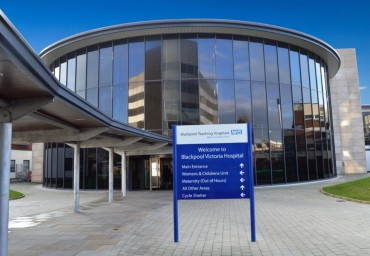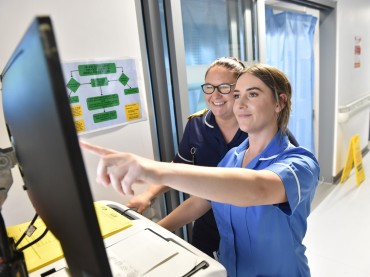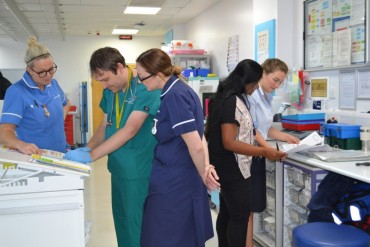A pulmonary nodule is an area of shadowing in the lung, usually 3 centimetres or less in size and round in shape. It does not usually cause any symptoms, but can be seen on a chest x-ray or CT (Computed Tomography) scan.
Pulmonary nodules are common. Approximately 1 in 4 older people who smoke, or who are ex-smokers, have nodules that can be seen on a CT scan.
People who have never smoked may also have nodules that can be seen on a CT scan. Most nodules are benign (not cancer), and may be due to scarring from previous lung infections. They are very common in people who have had TB (Tuberculosis), and can occur in people with other conditions, such as rheumatoid arthritis.
However, in a small number of people, a nodule could be a very early lung cancer, or occasionally a cancer that has spread from elsewhere in the body
Most pulmonary nodules are too small to be seen on a chest xray, and are often found when the person has a CT scan. They are often an incidental finding, unrelated to the reason the CT scan was performed in the first place. It is often not possible to know what the cause of a nodule is from the CT scan alone.
It may not be appropriate to take a biopsy (a sample of tissue from the nodule) because the nodule is so small. If this is the case, the recommended policy is that we monitor the nodule by repeating the CT scan after an interval to see whether or not it gets bigger. Benign nodules grow very slowly, and sometimes do not grow at all.
However, nodules that are cancerous will eventually grow, although this can happen very slowly. In order to check if your nodule is changing, you will have a repeat CT scan after a few months. Pulmonary nodules grow slowly, so there is no point in having scans any more frequently than this. If the nodule looks bigger or different in any way, your consultant may organise further tests but these will be explained to you as necessary.
Your consultant may discuss your case at a team meeting, but a repeat chest CT scan will usually be arranged. You may need to have several CT scans over a period of at least two years.
This way of monitoring nodules has been followed worldwide over many years and is a well accepted method. After each CT scan, you will receive the result by letter.
If you have any new or worsening symptoms between your scans, such as pain in your chest, shortness of breath, or repeated chest infections, you should let your nurse specialist know, as it may be necessary to bring forward your appointment to see your consultant.
Please contact your nurse specialist if you have any questions.
Patient Experience
Blackpool Teaching Hospitals NHS Trust values your feedback.
Patients, Relatives, Carers can give feedback at any time during their episode of care not just at discharge or the completion of their treatment.
Please ask your Patient Coordinator for a Patient Experience card or if you have any queries please contact the Patient Experience Team at bfwh.patientexperience@nhs.net or call 01253 955588/89



